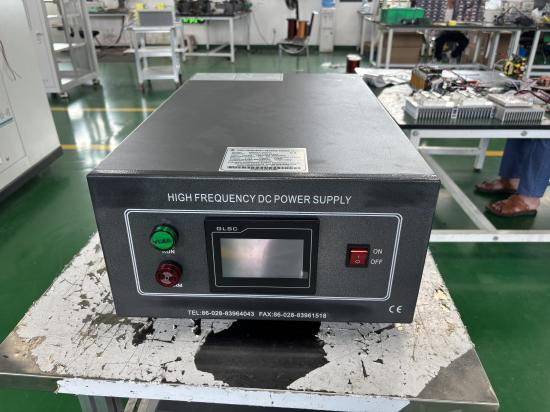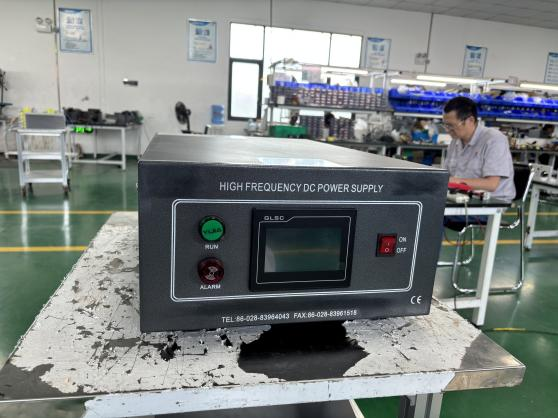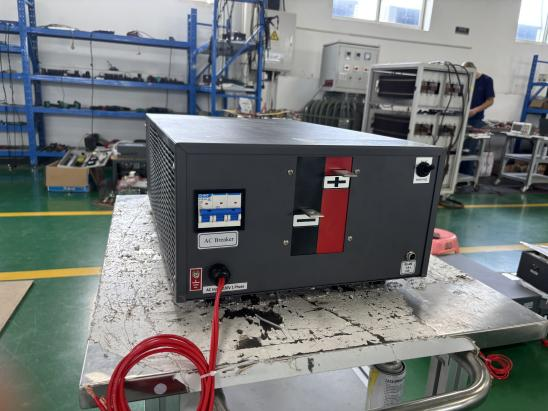A reversing power supply is a type of power source capable of dynamically switching the polarity of its output voltage. It is commonly used in electrochemical machining, electroplating, corrosion research, and material surface treatment. Its core feature is the ability to rapidly change the current direction (positive/negative polarity switching) to meet specific process requirements.
I. Main Features of Reversing Power Supply
1.Fast Polarity Switching
● Output voltage can switch between positive and negative polarity with short switching time (from milliseconds to seconds).
● Suitable for applications requiring periodic current reversal, such as pulse electroplating and electrolytic deburring.
2.Controllable Current Direction
● Supports constant current (CC), constant voltage (CV), or pulse modes, with programmable settings for reversal time, duty cycle, and other parameters.
● Suitable for processes requiring precise current direction control, such as electrochemical polishing and electrodeposition.
3.Low Ripple and High Stability
● Uses high-frequency switching or linear regulation technology to ensure stable output current/voltage, minimizing process impact.
● Ideal for high-precision electrochemical experiments or industrial machining.
4.Comprehensive Protection Functions
● Equipped with overcurrent, overvoltage, short circuit, and overtemperature protection to prevent equipment damage during polarity switching.
● Some advanced models support soft start to reduce current surges during reversal.
5.Programmable Control
● Supports external triggering (such as PLC or PC control) for automated reversal, suitable for industrial production lines.
● Allows setting of reversal period, duty cycle, current/voltage amplitude, and other parameters.
II. Typical Applications of Reversing Power Supply
1. Electroplating Industry
● Pulse Reverse Current (PRC) Electroplating: Periodic current reversal improves coating uniformity, reduces porosity, and enhances adhesion. Commonly used in precious metal plating (gold, silver), PCB copper plating, nickel coatings, etc.
● Repair Plating: Used for restoring worn parts such as bearings and molds.
2.Electrochemical Machining (ECM)
● Electrolytic Deburring: Dissolves burrs with reversing current, improving surface finish.
● Electrolytic Polishing: Applied to stainless steel, titanium alloys, and other precision polishing applications.
3.Corrosion Research and Protection
● Cathodic Protection: Prevents corrosion of metal structures (such as pipelines and ships) with periodic reversing current.
● Corrosion Testing: Simulates material behavior under alternating current directions to study corrosion resistance.
4.Battery and Materials Research
● Lithium/Sodium-ion Battery Testing: Simulates charge-discharge polarity changes to study electrode performance.
● Electrochemical Deposition (ECD): Used for preparing nanomaterials and thin films.
5.Other Industrial Applications
● Electromagnet Control: For magnetization/demagnetization processes.
● Plasma Treatment: Used in semiconductor and photovoltaic industries for surface modification.
III. Key Considerations for Selecting a Reversing Power Supply
1. Output Parameters: Voltage/current range, reversal speed (switching time), and duty cycle adjustment capability.
2. Control Method: Manual adjustment, external triggering (TTL/PWM), or computer control (RS232/GPIB/USB).
3. Protection Functions: Overcurrent, overvoltage, short circuit protection, and soft-start capability.
4. Application Match: Choose appropriate power capacity and reversal frequency based on specific processes such as electroplating or electrochemical machining.
Reversing power supplies play an important role in electrochemical machining, electroplating, and corrosion protection. Their key advantage lies in programmable polarity switching, which optimizes process results, improves coating quality, and enhances material research. Selecting the right reversing power supply requires a comprehensive evaluation of output parameters, control methods, and protection functions to meet the demands of different application scenarios.
Post time: Sep-25-2025








